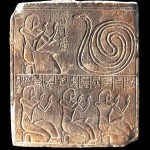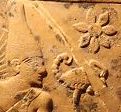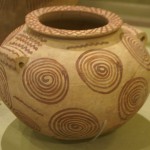Tomb K64 in the Valley of the Kings – The Story as it Broke
This brief article was written on 15th January when the discovery of Tomb KV64 in the Valley of the Kings was formally announced. Please refer to the Addendum of 18th January for the latest news, which also corrects some of the orginal report. The tomb was announced in Luxor by Mansour Boraik in Luxor and […] [more…]

Paneb – “The All Round Bad Guy”
In Joyce Tyldesley’s Judgment of the Pharaohs, Tyldesley makes several references to an individual at Deir el-Medineh named Paneb, whom she describes evocatively as “the all round bad guy” (2000, p.127). In this short article, I have brought together some of the misdemeanours outlined in a letter known as Papyrus Salt 124 (BM 10055) for a closer look at this colourful character. [more…]
Lecture Review: Dancers, Donkeys, and Dirt: New Discoveries from the Time of the Black Pharaohs from South Asasif, Egypt
Dr Pischikova recently gave a fascinating lecture on the rediscovered Twenty-fifth Dynasty early Kushite tomb of Karakhamun (TT 223) in the South Asasif necropolis, situated in Luxor’s West Bank. The lecture took place on 24th November 2011 in the Friends of the Egypt Centre in Swansea, south Wales (U.K.). [more…]
Help researching Ankhesenamum
I have been an armchair egyptologist for over 50 years. I have two main interests in Egyptology; Ankhesenamum and Tutmania. As a psychologist, I have long been interested in the impact of the discovery of the tomb of Tutankhamun as a social and cultural phenomenon and as an aspect of popular culture to the present […] [more…]
A very happy New Year
We hope you have enjoyed Egyptological throughout 2011. Why not celebrate the New Year by writing an article for Egyptological? Add it to your New Years Resolution list 🙂 Wishing you all the best for 2012. Andrea and Kate [more…]
Edition - December, 2011
Minor Menu Changes to Egyptological Site
As the site matures we are trying to make the ever-increasing amount of content easy to find. Over the next few months expect a few changes to various pages to try to make Egyptological even better and both quicker and easier to use. In today’s change, we have removed Colloquy from the menu (although the […] [more…]
Editorial – Journal Edition 2 and Magazine Edition 3
Welcome to our latest editions of the Journal and Magazine sections. There is a great mixture of topics, which we hope will provide something for everyone. In the Journal section Etienne Vande Walle has contributed more of his research into the legal terminology of Ancient Egypt, this time focusing on the significance of two titles […] [more…]
Comparison of the stelae of wsrimn (Fisher Collection, Detroit) and of ddwsbk (Louvre C240 and BM566) of Dynasty XII
Abstract
The 12th Dynasty (Middle Egytian) judicial system was surprisingly modern in its approach and composition, but our knowledge is assembled by a process of deduction. Most of the key evidentiary sources are testimonial stelae which list the titles held by senior officials during their lifetimes. The nature of an individual’s role in the judicial process can be postulated from the combination of titles held, in turn allowing a picture of the overall operation of kingly justice to emerge. “The paper considers the titles and history of two such individuals, comparing and contrasting the titles they held to build a picture which reveals the existence of investigative judicial processes. [more…]

Who Is King Scorpion?
Abstract
The ‘Scorpion’ Mace-head is one of the most significant objects from the main deposit at Hierakonpolis. Unlike the Narmer Mace-head, it is not a complete mace-head but only part of one. Apart from the dominant figure after whom the palette is named, the surrounding scenes are partial; however excellently these have been conserved. This makes the object even more enigmatic and difficult to interpret than usual in the context of the development of Early Dynastic royal iconography. [more…]
This article re-examines the evidence and suggests an alternative identification for King Scorpion. [more…]

 By
By